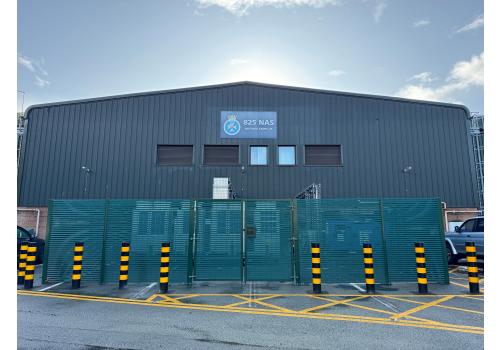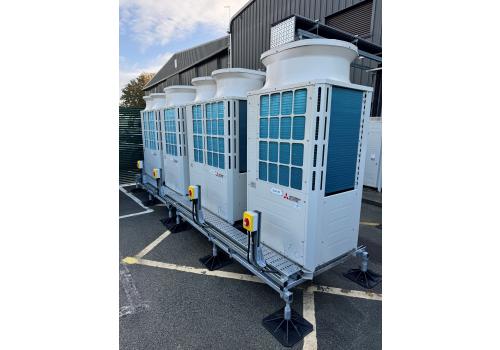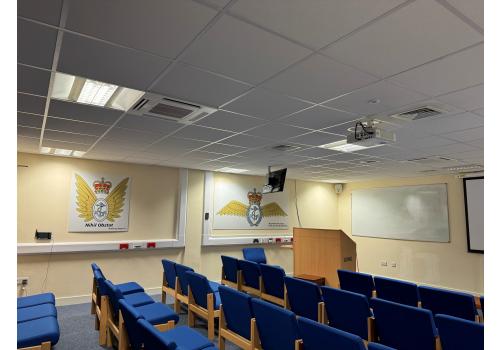Building 286 RNAS Yeovilton
Project name: Building 286 Air Conditioning
Client: ViVO
Location: RNAS Yeovilton
M&E Order Value: £672,000
Contractor: Dodd Group Defence Services
Building 286 at RNAS Yeovilton is an existing, two storey office, stores, and welfare facility, constructed as an infill building between two existing hangars in approximately 1994.The building occupants identified an issue with overheating within the asset. The overheating was having a negative impact on the building occupants and their ability to operate safely and effectively.
Dodd Group South HVAC Team, acting as Principal Contractor, supplied, installed, and commissioned new VRF comfort heating and cooling systems, as manufactured by Mitsubishi Electric Limited 'City Multi R2 Simultaneous Heating and Cooling' range.
As part of the project, we also undertook the following associated works.
- Isolation and stripping out of the redundant wet heating installation in areas where the new VRF system is installed.
- New external mechanical services compound to accommodate the additional mechanical equipment.
- Associated Electrical and Controls work.
- BWIC including redecoration and ceilings.
- Testing & Commissioning
- Production of record documentation, including "As Fitted" drawings and O&M manuals.
- Provision of training to the building users in the design principles and correct operation of the new HVAC systems.
The building is a 24/7 operational building occupied by Wildcat squadron.
Through careful planning and engagement with the building managers and stakeholders Dodd Group South HVAC team delivered the work across six phases with occupants decanting from each phase whilst the works were conducted before being thoroughly cleaned and handed back to them. This enabled the building to remain operational and for the Dodd Group and supply chain to work safely and effectively.
The project was completed over a short 3month period during the summer and was handed back on programme and to an extremely high standard.
Heat Recovery VRF systems were installed which provide simultaneous cooling and heating by transferring exhaust heat (or waste heat) from a zone being cooled to a zone that requires heating. If an office space is being cooled, the excess energy being removed is transferred into a room that requires heating. Local and centralised controllers were installed which enable the building manager to apply temperature dead bands and schedules to ensure the systems are operating most efficiently. The system is also linked to the site BMS system.






